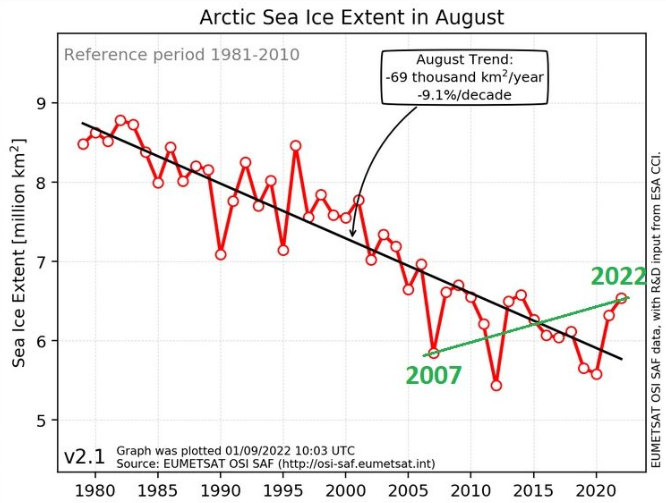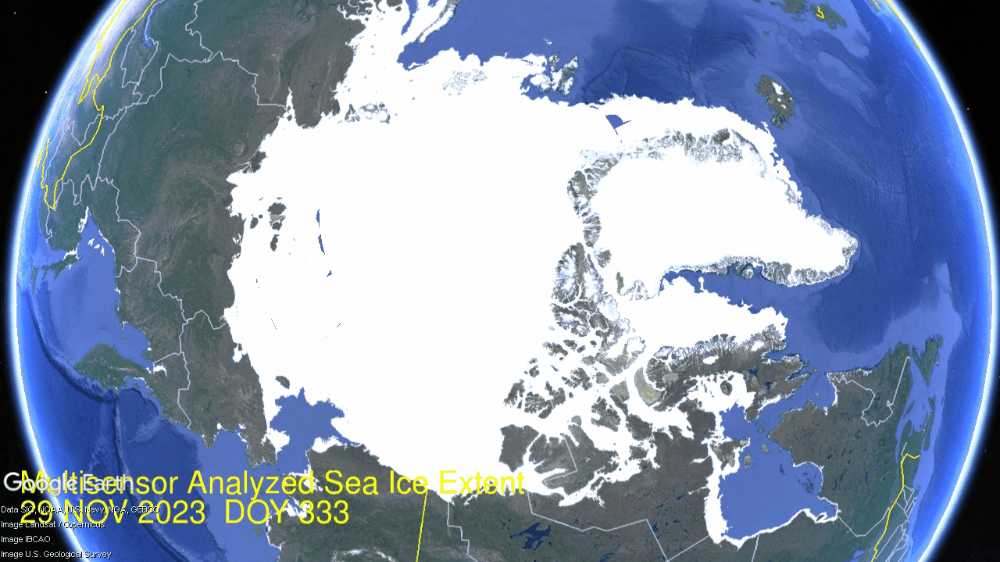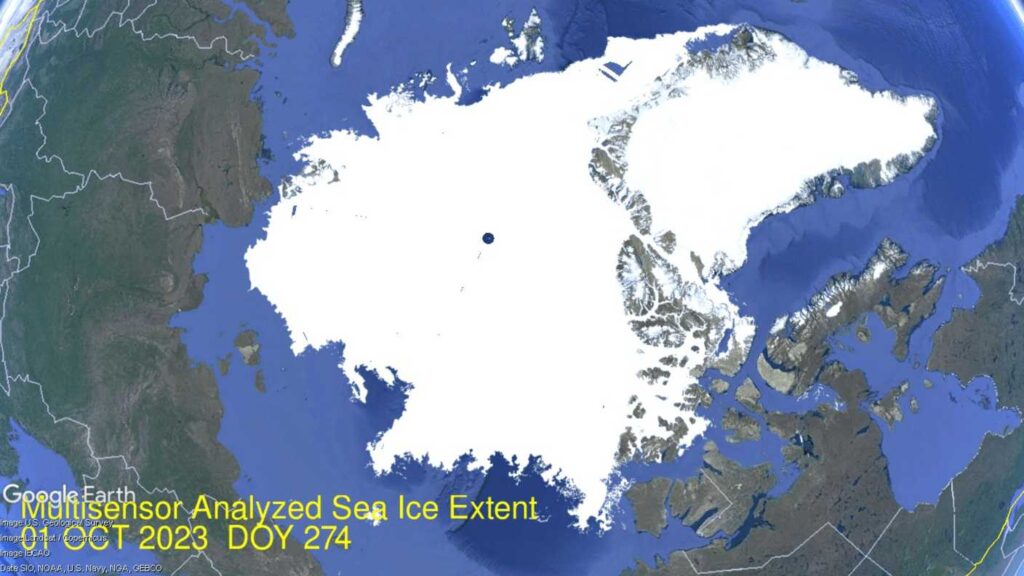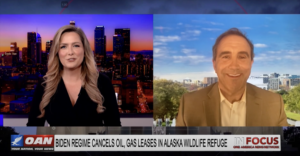Arctic sea ice continues to show resiliency…nearly normal temperatures in summer (melting) season holds the key to its holding firm
https://arcfieldweather.com/blog/2024/3/4/1030-am-arctic-sea-ice-continues-to-show-resiliencynearly-normal-temperatures-in-summer-melting-season-holds-the-key-to-its-holding-firmpossible-role-of-water-vapor Arctic sea ice continues to show resiliency…nearly normal temperatures in summer (melting) season holds the key to its holding firm…possible important role of water vapor* By Meteorologist Paul Dorian – Arcfieldweather.com March 4, 2024 As long as temperatures in the Arctic region remain close-to-normal during the summer season (gray area), there will likely be a […]
Arctic Sea Ice Continues its Remarkable Recovery: Ice expands to 21-year high
https://dailysceptic.org/2024/02/08/arctic-sea-ice-continues-its-stonking-recovery/ BY CHRIS MORRISON Arctic sea ice continued its stonking recovery last month, recording its 24th highest level in the 45-year modern satellite record. As reported previously in the Daily Sceptic, the ice climbed to a 21-year high on January 8th. Good news, of course, for ice fans and polar bears, but frankly a bit of a disaster if you are […]
New Publication: Pause In Arctic Sea Ice Loss Now Extends To 17 Years, Defying IPCC, NSIDC Predictions.

New Publication: Embarrassing Pause In Arctic Sea Ice Loss Now Extends To 17 Years, Defying IPCC, NSIDC Predictions. @NSIDC @IPCC_CH @GretaThunberg @ClimateDepot @PIK_Klima @NYTScience pic.twitter.com/4bdbNkZt3I — Pierre L. Gosselin (@NoTricksZone) January 8, 2024 The satellite era began in the early 1970s when extent was low. James' propaganda graph starts at the peak year in 1978 […]
COP28 Triggers Leap in Arctic Ice – ‘Remarkable growth of Arctic ice extent just since’ UN climate summit began

https://rclutz.com/2023/12/03/cop28-triggers-leap-in-arctic-ice/ By Ron Clutz / December 03, 2023 The animation shows remarkable growth of Arctic ice extent just since COP28 began. As noted in the previous Arctic ice post, Hudson Bay (lower right) was a lagging region, but freezing accelerated there. To the north Baffin Bay ice extended. As well, Both Bering and Okhotsk seas […]
October 2023 Arctic Ice Grows by Leaps – Ice expansion creates ‘complete closing of the Northern Sea Route for shipping’

https://rclutz.com/2023/11/02/october-2023-arctic-ice-grows-by-leaps/ by Ron Clutz The animation shows the rapid growth of Arctic ice extent during October 2023, from day 274 to day 304, yesterday. For all of the fuss over the September minimum, litte is said about Arctic ice growing 4M km2, that’s 4 Wadhams in one month!. Look on the left (Russian side) at the […]
‘Garbage & word salad’: Greenpeace co-founder Dr. Patrick Moore rebuts new study claiming gray whales’ ‘mass die-off’ due to ‘melting Arctic’
Paper here: https://www.science.org/doi/10.1126/science.adi1847 https://www.dailymail.co.uk/sciencetech/article-12645347/Mystery-2-000-gray–whales–died-coast-1980s-SOLVED.html Mystery of why more than 2,000 gray whales have died along US coast since the 1980s may have been SOLVED – and the reason is haunting Since 2019, 688 more whales died in a mass die-off researchers ‘did not expect’ Melting Arctic sea ice has cratered populations of the gray whales‘ prey species # Dr. Patrick Moore […]
Arctic Ice Refuses To Melt Away – Still not ‘ice free’ as predicted – 2023 sees sea ice extent in the ‘middle of the pack for what we have seen seen since 2007’
https://notalotofpeopleknowthat.wordpress.com/2023/09/27/arctic-ice-refuses-to-melt-away/ By Paul Homewood https://ocean.dmi.dk/arctic/icethickness/thk.uk.php Arctic sea ice extent has now passed its minimum for this year. According to NSIDC, it dropped to 4.213 million sq km on 17th September: https://noaadata.apps.nsidc.org/NOAA/G02135/seaice_analysis/ That puts it in the middle of the pack for what we have seen seen since 2007. I wonder when we’ll get apologies […]
Watch: Morano on OAN TV on Biden closing Arctic drilling & how surveys find the more you know about climate change, the less worried you are
American Energy Alliance: Biden ‘Raises Energy Prices Intentionally’ – ‘Interior Dept cancelled the 7 remaining oil & gas leases in Alaska’s Arctic Wildlife Refuge’
FOR IMMEDIATE RELEASE 09/07/2023 MEDIA CONTACT: [email protected] President Biden Raises Energy Prices Intentionally Biden has nobody to blame but himself for high gas prices. WASHINGTON DC (09/07/2023) – Despite rising gasoline prices, the Department of Interior cancelled the seven remaining oil and gas leases in Alaska’s Arctic Wildlife Refuge (ANWR), estimated to hold over 10 billion barrels of […]
New Study that Claims it Can Directly Link GHG Emissions to Polar Bear Cub Survival is Poppycock
https://wattsupwiththat.com/2023/09/01/new-study-that-claims-it-can-directly-link-ghg-emissions-to-polar-bear-cub-survival-is-poppycock/ From Polar Bear Science By Susan Crockford A global warming miracle has happened. While no scientist worldwide has ever drawn a straight line between greenhouse gas emissions and population declines in a species considered at risk due to climate change, a new paper just published in Science Magazine claims to have performed this unlikely feat for […]

